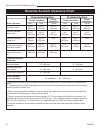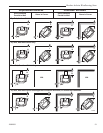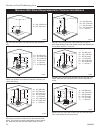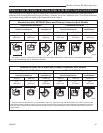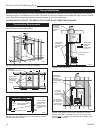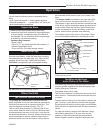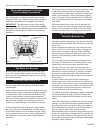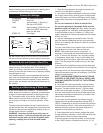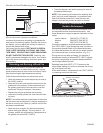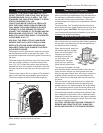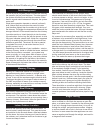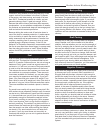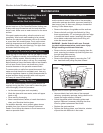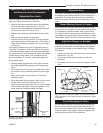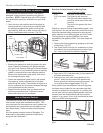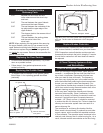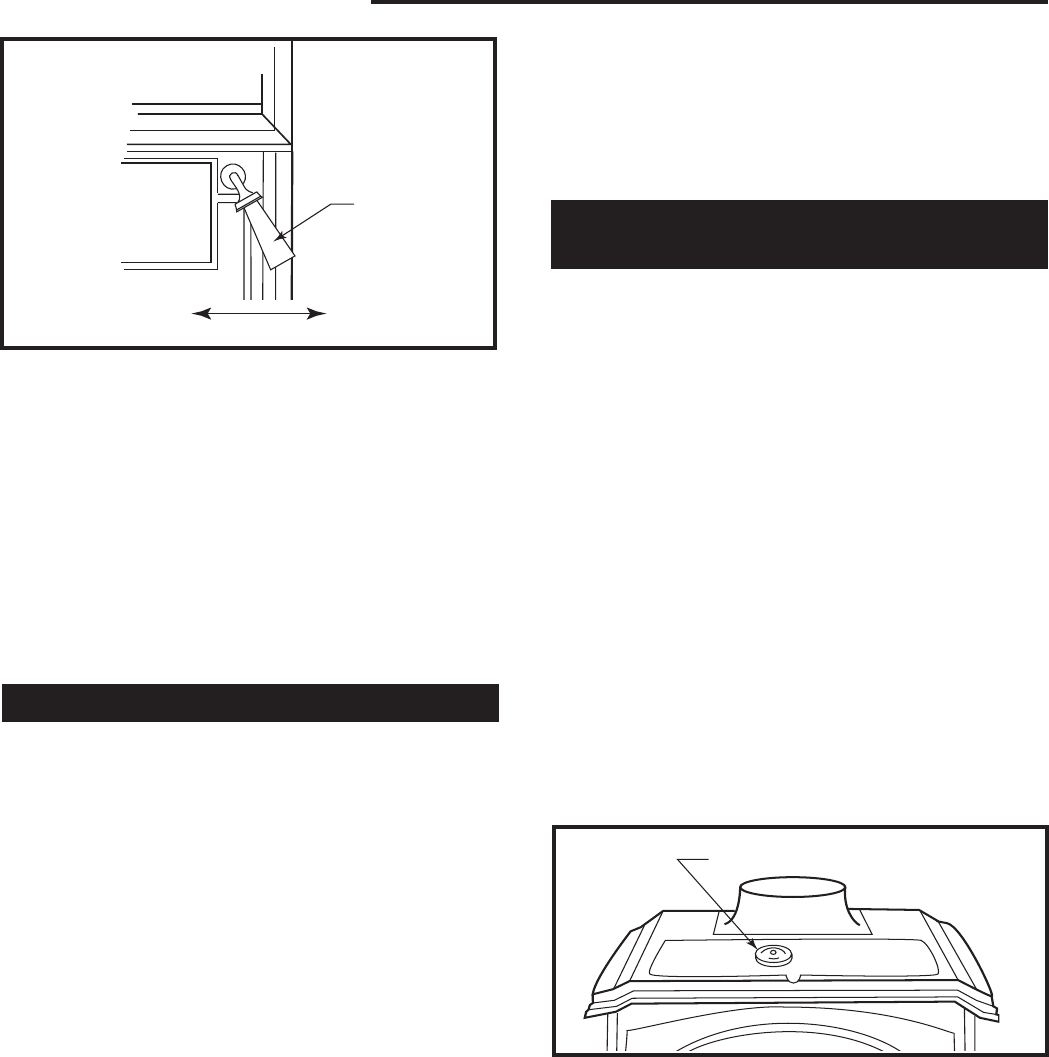
20
Resolute Acclaim Woodburning Stove
2000893
minutes at this maximum air setting to guarantee the
new load of fuel has fully ignited. Once the fuel is burn-
ing steadily, you may adjust the primary air supply to
provide the desired heat output.
You’ll soon find this stove is
HOT WHILE IN OPERA-
TION! KEEP CHILDREN, CLOTHING, AND FURNI-
TURE AWAY. CONTACT MAY CAUSE SKIN BURNS.
DO NOT OVERFIRE THIS HEATER. Overfiring can
result in permanent damage to the stove. If an exterior
part of the stove or the chimney connector glows, you
are overfiring.
Reloading and Reviving a Wood Fire
Reload your stove while it is still hot and there are
plenty of embers to re-kindle the fire quickly. Include
some smaller pieces of wood in the new load of fuel to
help the stove regain high temperatures quickly.
Follow this procedure when you reload your stove:
• Open the damper and move the primary air lever to
the “HIGH” position.
• Open the front door and check the ash level on the
grates and in the ash pan. Clear excess ash from
the grates, particularly at the rear area. Level the
ember bed. Empty the ash pan if necessary.
• Replace the ash pan and close the front door.
• Load wood, smaller pieces first, and close the load-
ing door.
NOTE: If the ember bed has burned down to the extent
the fire cannot be revived easily, it may be necessary to
set the air control to the “Start-up” position until the fire
has been re-established.
• Allow the stove to regain its “thermal momentum”
before closing the damper. This may take 15 - 20
minutes, and will be confirmed by a temperature on
the griddle of at least 500°F (260°C).
• Close the damper, and set the primary air lever for
the desired heat output.
NOTE: If the remaining charcoal bed is relatively thick
and if your fuel is well seasoned, it is possible to add
fresh fuel (smaller pieces first), close the door and
damper, and reset the primary air within 5 minutes.
A Surface Thermometer is a
Guide to Performance
Until you are familiar with how your stove works, moni-
tor the griddle surface temperature frequently. Use
these temperature ranges as general indicators of heat
output:
Low to medium 350-500°F (177-260°C)
Medium 500-600°F (260-318°C)
High 600-750°F (318-399°C)
Continuous operation at griddle temperatures higher
than 750°F (399°C) may damage the cast iron parts or
the porcelain enamel finish of your Resolute Acclaim.
A surface thermometer can also tell you when to adjust
the controls and when to refuel the stove. (Fig. 31)
During start-up and after re-loading, for example, a
thermometer reading of at least 500°F (260°C) signals
the stove is hot enough to close the damper and shift
into the high-efficiency mode.
Readings lower than 350°F (177°C) announce the
stove needs loading or it is time to increase the air sup-
ply for a higher burn rate.
At the other exteme, a temperature over 750°F (399°C)
is a warning to slow the burn rate.
ST614
Resolute Acclaim
Damper control
1/26/01 djt
Damper Control
Closed Open
ST614
Fig. 30 With the damper closed, secondary combustion takes
place and the Acclaim operates most efficiently.
ST615
Thermostat
on griddle
Stovetop Thermometer
ST615
Fig. 31 A thermometer gives temperature readings that help
you to operate your stove safely and effectively.



